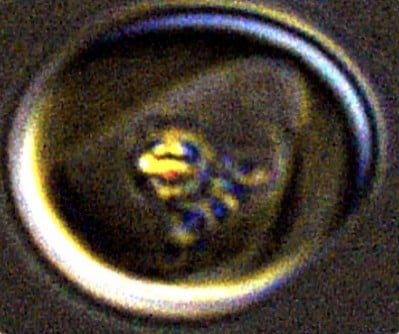URGENT UPDATE: New research reveals the secret behind the wildly spinning iron crystals within the Plasmodium falciparum malaria parasite. This groundbreaking discovery, just published in PNAS, uncovers that the crystals are propelled by a chemical reaction similar to that which powers rockets, a finding that could revolutionize malaria treatment and inspire advanced nanotechnology.
For decades, the motion of these microscopic iron crystals has baffled scientists, but a dedicated team led by Paul Sigala, PhD, at the University of Utah, has finally cracked the code. The study shows that the crystals spin due to the breakdown of hydrogen peroxide—an energy release that mimics propulsion methods used in aerospace engineering.
The implications of this research are enormous. The crystals’ relentless motion may play a critical role in the parasite’s survival by helping it eliminate toxic peroxide or manage iron compounds essential for its lifecycle. This discovery not only enhances our understanding of malaria biology but also opens doors for new antimalarial drugs and innovative nanoscale robots.
The team found that hydrogen peroxide, produced as waste by the parasite, fuels the crystal’s kinetic dance. When researchers reduced oxygen levels, the crystals slowed dramatically, suggesting their spinning is vital for the parasite’s health.
Why This Matters NOW: With malaria affecting millions globally, this research could lead to more effective treatments, potentially saving countless lives. By targeting the unique mechanisms of the parasite, researchers can develop drugs that minimize side effects for humans.
“Understanding how these crystals operate gives us a powerful target for new medications,” Sigala stated. “If we can disrupt this process, we might effectively kill the parasites without harming human cells.”
Moreover, the discovery of self-propelling metallic nanoparticles in these parasites marks a significant advance in biological science. The findings suggest that such propulsion mechanisms could be more common in nature than previously thought, paving the way for the development of advanced nanotechnology for drug delivery and industrial applications.
As researchers continue to explore the implications of this discovery, expect rapid advancements in both malaria treatment and nanorobot technology. The potential for new therapies could redefine our approach to combating this deadly disease.
Next Steps: The research team is focusing on further understanding the chemical reactions involved, aiming to develop targeted therapies that exploit the unique characteristics of the parasite’s iron crystals. As the study unfolds, the scientific community will be closely monitoring developments that could lead to transformative breakthroughs in malaria treatment.
Stay tuned for more updates as this story develops.







